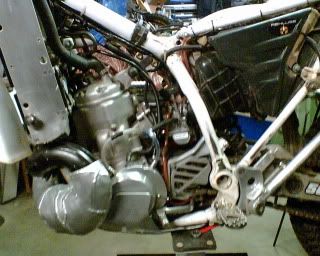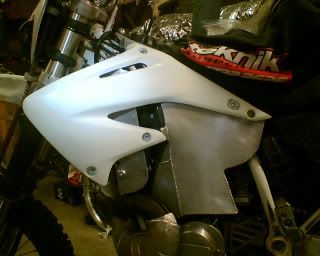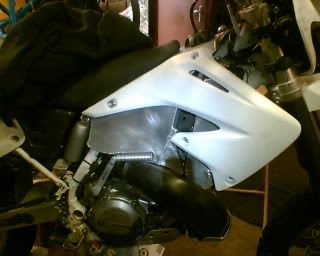
Weep hole leaking oil.
- maddog1927
- Posts: 313
- Joined: April 4th, 2010, 8:10 am
- Last active:
- Location: Mesa, AZ
-
100hp honda
- Posts: 4394
- Joined: July 4th, 2007, 6:57 pm
- Last active:
- maddog1927
- Posts: 313
- Joined: April 4th, 2010, 8:10 am
- Last active:
- Location: Mesa, AZ
-
100hp honda
- Posts: 4394
- Joined: July 4th, 2007, 6:57 pm
- Last active:
For the last 20 years I've sealed off both the internal hole in the ignition side of the crankcase, and the vent hole for this at the crank halve joint.
Then I put 2 fittings in the ignition cover for hoses., that go to well protected and filtered areas.
Stops water ingress in the river / creek crossings that I deal with, and also allows airflow through the ignition and lighting stator. No rust, or crud in the ignition cover, and it keeps things much cooler. It's a simple mod to do.
Then I put 2 fittings in the ignition cover for hoses., that go to well protected and filtered areas.
Stops water ingress in the river / creek crossings that I deal with, and also allows airflow through the ignition and lighting stator. No rust, or crud in the ignition cover, and it keeps things much cooler. It's a simple mod to do.
Not a good pic - but you should be able to see the fittings , they are at approx 10 o'clock and 1.30 on the side cover (just forward of the clutch cable). I've done essentially the same thing to 500s that I've had the plastic cover still on, and on Any bike I've had with a dry ignition. I've also a drain bolt in the very bottom of the cover, with an access hole in the bash plate, for any full on drowning disasters. I'm buggered if I'll leave the ignition / crank end / seals on any of my bikes (with a non oil ignition set up) so exposed to the elements. The std. vent systems on the majority of dry ignition are bloody criminal. Open. low vents to key components on vehicles that are used in the dirt / rivers / creek crossings.  It's the main reason for ignition problems / crank seal problems, I think.
It's the main reason for ignition problems / crank seal problems, I think.
Sealing the internal hole and the slot under the cases is a no brainer - the centre gasket stops the sealant of your choice from fusing the cases together ( important for me, as I use liquid metal / 2 part, mash together alloy repair stick).
With my drop tank, which comes down to the barrel / case interface, I've had to put elbowed ends on since this pic to clear the tank and the Mikuni fuel pump that resides on the very bottom of the tank, right next / outboard of the clutch cable exit.



Sealing the internal hole and the slot under the cases is a no brainer - the centre gasket stops the sealant of your choice from fusing the cases together ( important for me, as I use liquid metal / 2 part, mash together alloy repair stick).
With my drop tank, which comes down to the barrel / case interface, I've had to put elbowed ends on since this pic to clear the tank and the Mikuni fuel pump that resides on the very bottom of the tank, right next / outboard of the clutch cable exit.



It's a 13.5 litre, 6061 Aluminium tank - pictured in rough form , just before finishing details like linishing out some external welds (that have interior welds as well) and the mounting of the fuel pump. Gen 3 shrouds, completely flat top tank. The fuel load carried that low, makes it feel like a 200. Inspired by the 81/82/83 era works Hondas (and KTM 2t large tanks), but, a mirror image of course.
Somewhat more involved than doing an AF conversion, and I'd have to charge a fair bit for one if I sold them.

Somewhat more involved than doing an AF conversion, and I'd have to charge a fair bit for one if I sold them.
 "the game of life of is not so much in holding a good hand as playing a poor hand well"
"the game of life of is not so much in holding a good hand as playing a poor hand well"
